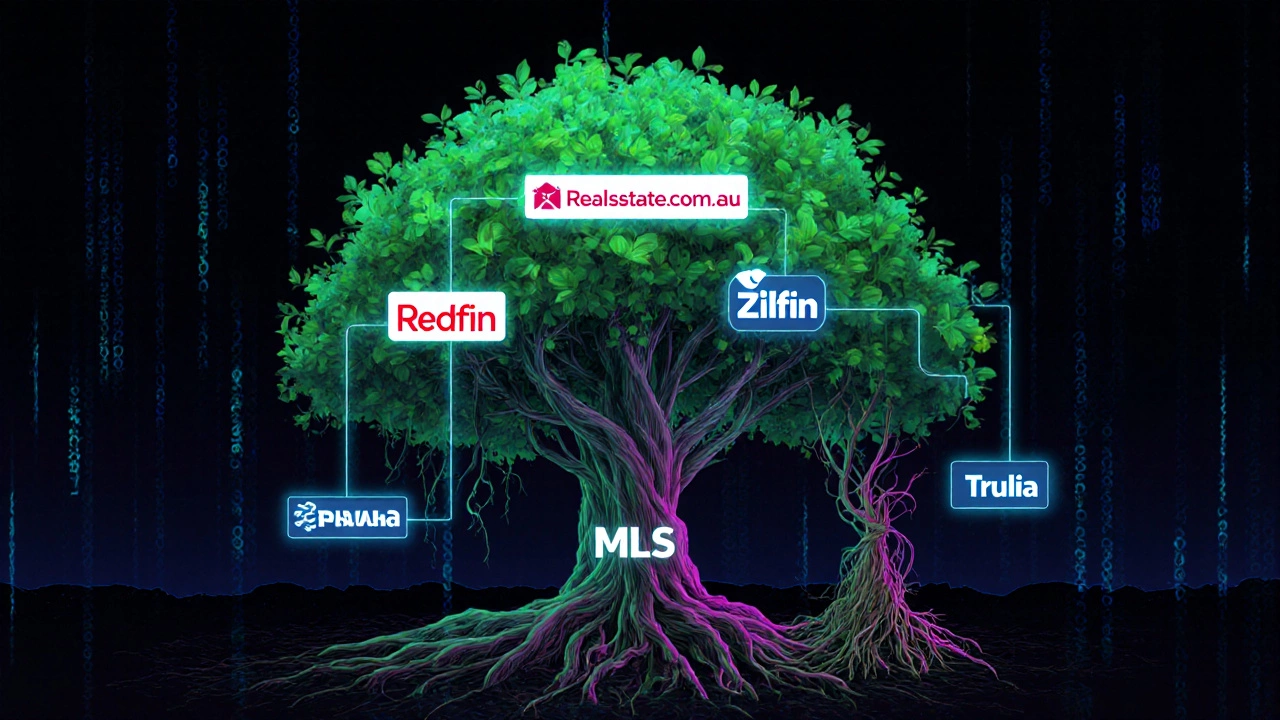Real Estate Listing Accuracy Checker
Real estate sites vary significantly in their accuracy. This tool helps you understand how reliable different platforms are for finding current listings based on key criteria from the article: direct MLS access, real-time updates, clear status labels, and accurate pricing data.
Key Accuracy Factors
- MLS Access:
- Update Speed:
- Status Clarity:
- Pricing Accuracy:
Verification Tips
If you're searching for a home online, you've probably noticed that not all realtor sites show the same prices, photos, or even whether a house is still for sale. One site says a property is available, another says it sold last week. You click through, call the agent, and find out the listing was pulled two days ago. It’s frustrating-and it wastes time. So which realtor site is most accurate? The answer isn’t simple, but it’s not random either.
Accuracy isn’t just about listings-it’s about timing
Accuracy on realtor sites doesn’t mean perfect photos or nice maps. It means the data matches reality when you need it. That includes:
- Is the home still for sale?
- Is the price current?
- Does the listing reflect recent inspections, repairs, or price drops?
- Are open house times and agent contact details up to date?
Most sites pull data from local Multiple Listing Services (MLS), but they don’t update at the same speed. Some refresh every 15 minutes. Others wait hours-or even days. A home listed as ‘active’ on one site might be under contract on another, simply because of lag.
Redfin leads in speed and transparency
In Australia and the U.S., Redfin stands out because it’s one of the few platforms that actually employs its own agents. That means they have direct access to MLS feeds and update listings in near real time-often within 10 to 30 minutes of a status change. Their system also flags homes that are under contract or pending, with clear labels so you don’t waste time.
Redfin doesn’t just show prices. It shows price history. You can see if a home dropped $20,000 last month, or if it’s been on the market for 90 days with no offers. That’s not just data-it’s context. In Melbourne’s competitive market, knowing a house has been sitting for months might mean you can negotiate harder.
Zillow’s estimates are useful, but misleading
Zillow is the name most people recognize, but its accuracy is mixed. Its Zestimate tool-a computer-generated home value-can be off by 10% to 20% in volatile markets. In areas like Melbourne’s outer suburbs or regional towns, where recent sales are scarce, Zillow’s algorithm guesses based on outdated comps. A house sold for $680,000 in 2023? Zillow might still show a $720,000 estimate, even if the seller just dropped it to $630,000.
And Zillow’s listings? They’re often outdated. A 2024 study by the University of California found that Zillow had the highest rate of stale listings among major platforms-over 18% of homes shown as active were actually sold or off-market. That’s nearly 1 in 5 homes you’ll waste time on.

Realestate.com.au and Domain are local leaders
In Australia, Realestate.com.au and Domain dominate. Both pull directly from MLS feeds used by local agents, so their listings are more reliable than U.S.-based sites like Zillow when you’re searching locally.
Realestate.com.au updates faster than Domain, especially for auction listings. If a property is going to auction on Saturday, Realestate.com.au will usually reflect the ‘Under Contract’ status by Friday afternoon. Domain often lags by 24-48 hours.
Realestate.com.au also shows more detailed inspection reports, vendor disclosures, and council zoning info-critical for buyers in Australia. Domain, while clean and easy to use, often strips out those details to keep the interface simple.
Why some sites are worse than others
Not all realtor sites are created equal. Here’s why some fail:
- Aggregators like Trulia or HotPads don’t have direct MLS access. They scrape data from other sites, which means errors get copied and repeated.
- Broker-owned sites (like a single agency’s website) only show their own listings. You’ll miss 70% of the market.
- International sites (like Rightmove in the UK) don’t update Australian data at all. Don’t waste time on them.
One buyer in Geelong spent three weeks chasing a house listed on a third-party aggregator. When they finally called the agent, the property had been sold for six weeks. The listing was still live because the aggregator never refreshed its feed.

What the top sites get right
The most accurate platforms share three things:
- Direct MLS access-not third-party scrapes
- Real-time updates-within an hour, not a day
- Clear status labels-‘Active’, ‘Pending’, ‘Sold’, ‘Under Contract’-not just ‘For Sale’
Redfin and Realestate.com.au do this well. Zillow and Domain? Sometimes. Other aggregators? Rarely.
How to use these sites wisely
Even the best site won’t save you from bad data if you don’t know how to use it. Here’s how to avoid traps:
- Check the last update date-Realestate.com.au shows when a listing was last modified. If it’s older than 48 hours, call the agent.
- Compare across two platforms-Check the same property on Realestate.com.au and Redfin. If one shows ‘Sold’ and the other says ‘Active’, trust the one with the more recent update.
- Look for agent photos-If the listing has a photo of the agent holding a sign in front of the house, it’s likely current. Generic stock photos? Red flag.
- Use the ‘Price History’ feature-If a home’s price hasn’t changed in 6 months, it’s probably overpriced or has hidden issues.
One buyer in Carlton used this method. They found a house listed at $890,000 on Realestate.com.au. Cross-checked it on Redfin-it showed a $70,000 price drop from three weeks ago. They made an offer at $780,000 and got it.
Bottom line: No site is perfect, but one is the most reliable
For buyers in Australia, Realestate.com.au is the most accurate site for finding real, current listings. It’s local, updated frequently, and includes the legal and inspection details you need. If you’re also looking at U.S. markets or want deeper price trends, Redfin is the best companion.
Stay away from Zillow if you’re serious about buying in Australia. Its estimates are guesses. Its listings are often wrong. And its interface is designed to keep you scrolling-not to help you buy.
Accuracy isn’t about flashy maps or AI tools. It’s about trust. The site that tells you the truth fastest is the one that saves you time, money, and stress.
Is Realestate.com.au more accurate than Zillow in Australia?
Yes. Realestate.com.au pulls data directly from Australian MLS systems and updates listings within hours. Zillow doesn’t have direct access to Australian MLS feeds and often relies on outdated or scraped data, making it unreliable for Australian property searches.
Why do some realtor sites show sold homes as still available?
That happens when sites don’t have real-time access to MLS updates. Aggregators like HotPads or Trulia copy listings from other platforms and may refresh only once a day-or less. If a home sells at 3 PM on Tuesday, it might still show as ‘active’ on those sites until Thursday.
Should I trust Zillow’s Zestimate when buying a home?
No. Zestimates are automated estimates based on incomplete or outdated data. In fast-moving markets like Melbourne, they can be off by $100,000 or more. Always rely on recent comparable sales from a local agent or Realestate.com.au’s sold data instead.
What’s the best way to verify if a listing is still active?
Call the agent listed on the property. Ask: ‘Is this still available? Has it gone under contract or been sold?’ Also check the listing’s last update date on Realestate.com.au or Redfin. If it hasn’t changed in over 48 hours, treat it as suspect.
Do all realtor sites show the same properties?
No. Broker-owned sites only show listings from that agency. Aggregators like Rightmove or Zillow may miss listings entirely if they’re not syndicated. Realestate.com.au and Redfin have the broadest coverage because they connect directly to MLS feeds.
